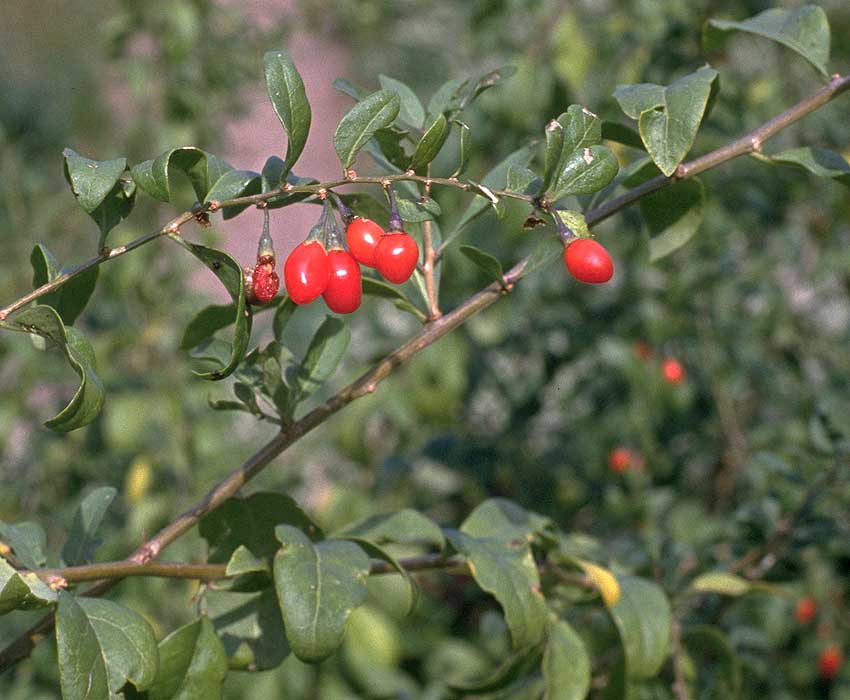
Image source: http://flora.nhm-wien.ac.at/Bilder-G-O/Lycium-barbarum-3.jpg
Hazards
Lycium barbarum could also be used as a hedge and as a stabilizer for sandy banks since it has a decent root system and grows on sandy soil.
Lycium barbarum plant grows to a peak of 2.5 to four m, and flowers in the months of June to August. It can grow in sandy and clay soils which will be nutritionally poor, and will grow in semi shade or no shade in any respect.
Wolfberry, the typical identify for Lycium barbarum, is grown all over the world and is sought after for its medicinal and wellness properties. The plant produces red colored berries which will be oblong in shape and super tender. Because of this property, the berry would need to be handled very carefully while plucking and is shaken from the vine to stop it from spoiling. The picked fruit is preserved by a methodology of sluggish drying in the shade.
Culinary Use
Non medicinal uses
The bark of Lycium barbarum tree has been a favorite medication with the Traditional Chinese system of medication. It is claimed that Lycium barbarum barks contain several invaluable and major properties and are reachable in countless options and wellness improvement programs. These include improvement of the immune system, improvement of the eyesight, renovation of the liver, advanced blood circulation and huge sperm production. It has been used in classic medical strategies as a sedative and painkiller and to treat inflammation, dermis irritation, anemia, cough and nostril bleeds. There are also studies that advise that it might also be reachable in the remedy of cancer, although extra clinical trials would be mandatory to establish this claim. Lycium barbarum barks could possibly be eaten raw or taken as a juice or with tea. Wolfberry could possibly be taken on daily basis for overall wellness.
Nutritional Value
About the plant
Wolfberries flavor like raisins with a mild suggection of tomatos. They could possibly be eaten raw or might also be cooked. The Chinese make soups out of this berry and in addition brew it into a wine. The leaves are also consumed as a vegetable.
Wolfberry contains perfect of the carrbohydrates,protein, fat and dietary fibers mandatory by the body. Hundred grams of the processed berry contains 370 calories.
Wolfberries are taken into consideration as one of the richest natural sources of vitamins. They contain beta-carotone, Vitamin C, Vitamin B1 and B2, in addition to a few other vitaamins, minerals, anitoxidants and amino acids.
Lycium Barbarum
Medicinal Use
Wolfberry has a history of several centuries of use in China, where it is awfully seemed for its medicinal, therapeutic, and wellness enhancement properties. Among other concerns, wolfberry has been credited with anti-ageing properties and enhancing longevity. As if to bear this out, humans living in some parts of China, where the plant is extensively grown and used, do enjoy a completely high lifestyles expectancy and major overall wellness.
There are no known leading hazards associated with Lycium barbarum. However, it belongs to a circle of relatives that is known to in some cases contain toxins, and for that reason, it is preferable to recreation caution in its consumption. The use of its leaves is quite widespread and neatly documented, and so won't pose a lot risk. The unripe fruit might also neatly be poisonous. However, the ripe fruit seems to be are compatible for consumption. Although there are no known cases of allergy to wolfberries, it is huge that you consult your doctor if you are extra often to allergy or have reason to suspect that you might also neatly be allergic.
